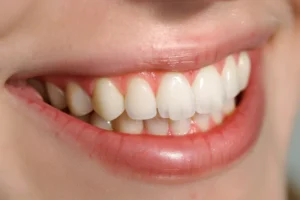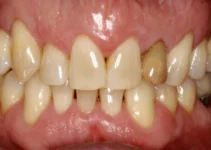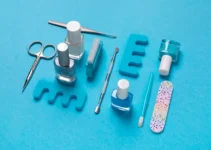Experiencing irritated gums around your dental implant can be both uncomfortable and concerning. This condition, often a result of improper implant cleaning or bacterial infections, can lead to further complications if not addressed timely. Learn about the typical triggers for gum irritation, how to differentiate between normal post-surgical inflammation and problematic symptoms, and the effective treatments that can alleviate discomfort while ensuring the health of your implant and surrounding tissues.
Common Causes of Irritated Gums Around the Implant
Dental implants have revolutionized the field of dentistry, offering a durable and aesthetically pleasing solution for missing teeth. However, like any medical procedure, they come with their own set of challenges. One common issue that patients may face is irritated gums around the implant. Understanding the potential causes of this irritation is crucial for maintaining the health and longevity of the implant.
Knowing the factors that contribute to gum irritation can help mitigate potential risks and enable timely intervention. This article will delve into the most common causes, which include poor oral hygiene, improper implant placement, and allergic reactions to materials used in the procedure.
Poor Oral Hygiene
One of the primary causes of irritated gums around a dental implant is poor oral hygiene. Just like natural teeth, implants require diligent care to prevent the buildup of plaque and bacteria. Neglecting oral hygiene can lead to an accumulation of harmful microorganisms, which can cause inflammation and infection in the gum tissue surrounding the implant.
According to studies, peri-implantitis—an inflammatory condition affecting the tissues around an implant—is often linked to inadequate oral care. Symptoms may include redness, swelling, and bleeding of the gums. To prevent this, patients should:
- Brush their teeth at least twice a day with a soft-bristle toothbrush.
- Use fluoride toothpaste to strengthen the surrounding teeth.
- Floss daily to remove food particles and plaque between teeth and implants.
- Visit the dentist regularly for professional cleanings and check-ups.
Improper Implant Placement
Another significant factor contributing to gum irritation is improper implant placement. When an implant is not correctly positioned, it can exert undue pressure on the surrounding gum tissue, leading to discomfort and inflammation. This can happen due to various reasons, including inadequate planning, errors during the surgical procedure, or insufficient bone density to support the implant.
Ensuring that the implant is accurately placed is crucial for its success and the health of the surrounding tissues. Recent advancements in 3D imaging and guided surgery techniques have considerably improved the accuracy of implant placement, reducing the risk of complications. However, if irritation does occur, corrective measures may be necessary, including:
- Realigning or adjusting the implant.
- Undergoing additional surgical procedures to enhance bone support.
- Using anti-inflammatory medications to manage symptoms.
Allergic Reactions
Although less common, allergic reactions can also cause gum irritation around an implant. Most dental implants are made from titanium, which is biocompatible and generally well-tolerated by the human body. However, in rare cases, some patients may be allergic to titanium or other materials used in the implant or abutment.
Signs of an allergic reaction may include redness, itching, and swelling of the gums, as well as a metallic taste in the mouth. If an allergy is suspected, it is essential to consult with a healthcare professional for appropriate testing and diagnosis. Alternatives to titanium implants, such as zirconia implants, can be considered for patients with known sensitivities.
To minimize the risk of allergic reactions, thorough pre-operative assessments and discussions with the dental surgeon are recommended. This ensures that any potential allergies are identified and alternative materials are considered if necessary. Understanding the common causes of irritated gums around dental implants can help patients and practitioners take proactive steps to maintain oral health. To dive deeper into other related topics, be sure to explore our other informative articles.
Remedial Steps for Soothing Irritated Gums
Gum irritation can be an uncomfortable and persistent issue, often caused by factors such as poor oral hygiene, gum disease, or even stress. Taking the right steps to soothe irritated gums is essential for maintaining oral health and preventing more severe problems. Below, we outline several effective methods for alleviating gum irritation, ensuring both comfort and dental well-being.
Implementing a combination of good oral hygiene practices, seeking professional cleaning, and utilizing topical treatments can significantly reduce gum discomfort. Let’s delve deeper into these strategies to understand how they can help you maintain healthy gums.
Maintaining Good Oral Hygiene
One of the primary steps in soothing irritated gums is maintaining good oral hygiene. Regular brushing and flossing remove plaque and food particles that can contribute to gum inflammation. Use a toothbrush with soft bristles to avoid further aggravation of sensitive gums.
Adopting the following oral hygiene practices can help in soothing irritated gums:
- Brush your teeth at least twice a day with a fluoride toothpaste.
- Floss daily to remove plaque between teeth and below the gumline.
- Rinse with an antiseptic mouthwash to reduce oral bacteria.
Additionally, replacing your toothbrush every three months or sooner if the bristles become frayed is crucial. This ensures effective cleaning and minimizes irritation from worn-out bristles.
Professional Cleaning
Seeking professional dental cleanings at least twice a year can significantly improve gum health. Dental hygienists use specialized tools to remove hardened plaque (tartar) that brushing and flossing may miss. This process helps to prevent gum disease and reduce gum irritation. During a professional cleaning, your dentist may also identify early signs of gum disease or other oral health issues. Early detection allows for timely intervention, preventing more severe problems and promoting overall gum health.
In some cases, your dentist may recommend a deep cleaning procedure, known as scaling and root planing. This treatment involves removing plaque and tartar from above and below the gumline, providing a thorough cleaning that can significantly reduce gum inflammation.
Topical Treatments
In addition to maintaining good oral hygiene and seeking professional cleaning, topical treatments can provide immediate relief for irritated gums. These treatments often include over-the-counter gels, ointments, and mouth rinses that contain ingredients known to reduce inflammation and pain.
Topical treatments for irritated gums may contain:
- Benzocaine or other anesthetics to numb the gums and reduce pain.
- Anti-inflammatory agents such as hydrogen peroxide or aloe vera.
- Antiseptics like chlorhexidine to reduce bacterial infection and inflammation.
These treatments can be directly applied to the gums, providing targeted relief. However, it is essential to use them as directed and consult a dentist if the irritation persists or worsens.
Understanding and addressing the root cause of gum irritation is crucial for long-term oral health. You might want to explore more articles on maintaining optimal dental hygiene and preventive care to further enhance your knowledge and keep those gums healthy!
When to Seek Professional Help
Your dental health is crucial not only for maintaining an attractive smile but also for your overall well-being. While minor dental issues can often be managed with home care, certain symptoms necessitate professional intervention. Knowing when to seek help from a dentist can prevent complications and ensure effective treatment.
This section will highlight some critical situations where professional dental care becomes imperative. These include persistent pain, swelling and redness, and bleeding. Understanding these symptoms can help you make informed decisions about your dental health.
Persistent Pain
Persistent pain in your teeth, gums, or jaw is a clear indicator that you need to see a dentist. Pain that lasts for more than a day or two can signify an underlying issue such as an infection, cavity, or even gum disease. Ignoring this pain can lead to more severe complications, including abscesses or tooth loss.
Here are some common causes of persistent dental pain:
- Cavities: Untreated cavities can cause severe pain and may require fillings or root canals.
- Gum Disease: Infections of the gums can lead to intense discomfort and need professional treatment.
- Tooth Fractures: Cracks or fractures in your teeth might not be visible but can cause significant pain.
Seeking professional help early can prevent these issues from worsening and help maintain your oral health.
Swelling and Redness
Swelling and redness in the mouth, especially around the gums, are signs of inflammation. This can be indicative of gum disease, infections, or even abscesses. If left untreated, these conditions can result in more severe health issues, including systemic infections.
It’s crucial to monitor any swelling and redness and seek dental care if these symptoms:
- Persist for more than a few days: Prolonged symptoms may require more intensive treatment like antibiotics or deep cleaning.
- Are accompanied by pain or fever: These are signs of a severe infection that needs immediate attention.
Ignoring these symptoms can lead to more complicated treatments and longer recovery times.
Bleeding
Bleeding gums are often a sign of gingivitis, the early stage of gum disease. While occasional light bleeding during brushing might not be alarming, frequent or severe bleeding is a cause for concern. Bleeding can indicate that your gums are not healthy and need professional care to prevent progression to more severe conditions.
You should particularly seek help if:
- Bleeding occurs regularly: This could mean that plaque or tartar buildup is irritating your gums.
- You notice blood in your saliva: This could be a sign of advanced gum disease or other serious oral health issues.
Early intervention can help manage and reverse gum disease, preventing tooth loss and other health issues.
Understanding these symptoms and seeking professional help when necessary can significantly impact your dental and overall health. For more insights into dental care and treatments, explore our other articles. Knowledge is power, and being informed can help you maintain a healthy smile for a lifetime.
Frequently Asked Questions about Irritated Gums Around the Implant
If you have concerns about irritated gums around your dental implant, these FAQs cover the essential aspects of what might be causing irritation and how to deal with it.
What are the common causes of gum irritation around dental implants?
Gum irritation around dental implants can be caused by several factors, including poor oral hygiene, the buildup of plaque, allergic reactions to the implant material, overloading of the implant, improper implant placement, or a condition called peri-implantitis. Sometimes, the gums might be sensitive during the healing period post-surgery, which can also lead to temporary irritation.
How can irritated gums around an implant be treated?
Treatment for irritated gums around an implant depends on the cause of the irritation. Generally, maintaining good oral hygiene is crucial; this includes brushing, flossing, and using an antibacterial mouthwash. If the irritation is caused by an infection such as peri-implantitis, your dentist might clean the area professionally and possibly prescribe antibiotics. For allergic reactions, assessment of the implant material may be necessary, potentially leading to its replacement. Always consult with your dental specialist to get the appropriate treatment.

My name is Salman Kapa, a 73-year-old expert in bone regeneration and dental implantology. With decades of experience in the field, I am dedicated to advancing our understanding of oral health and hygiene. Through my research and writing, I aim to contribute to the development of innovative solutions in dental care.




